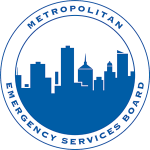From a public safety communications perspective, interoperability means emergency response personnel have the ability to share information via voice and/or data systems on demand, in real time, when needed, and when necessary.1 Many agencies and regions across the country struggle with this due to incompatible frequencies or radio systems. The Twin Cities metropolitan area is not one of those regions due to the ARMER (Allied Radio Matrix for Emergency Response) system.
The ARMER system was first conceived for the metropolitan area in the late 1980s due to aging radio systems and lack of additional frequencies. A commission was formed and a recommendation was presented to and approved by the Minnesota Legislature in 1995. In June 1995, the Metropolitan Radio Board formed and began to plan and implement a region-wide radio system for use by EMS, Fire, Law Enforcement, Public Service and Public Works. The metropolitan area backbone covers ten counties (Anoka, Carver, Chisago, Dakota, Hennepin, Isanti, Ramsey, Scott, Sherburne, and Washington) and provides 95% portable on-the-belt, on-the-street coverage.
The ARMER system is an 800 MHz digital trunked system which allows frequencies to be pooled and shared. Agencies have access to a greater number of frequencies than would have been available if they had constructed stand-alone systems; financial savings were also achieved. The backbone is owned by the Minnesota Department of Transportation (MnDOT).
Counties (and some cities) have the option to add to the backbone and build their own subsystem. This adds capacity and coverage and often can provide in-building coverage. Each county owns its subsystem.
Embedded in the metropolitan area backbone is a VHF interoperability system so that with certain resources, ARMER users can be patched and communicate directly with VHF users who travel in the metropolitan region, or who have not yet joined the ARMER system.
The metropolitan area ARMER system became operational in 2002. The initial users were MnDOT, Minnesota State Patrol (metro region), Carver County, Hennepin County, Metro Transit, City of Minneapolis, North Memorial Medical Transportation, and the City of Richfield. For the first time, for example, State Patrol could easily speak to a Minneapolis police squad through the use of interoperability or shared talkgroups, without having to relay information via telephone through dispatchers or by swapping radios. Technically, interoperability was achieved.
After the initial migration in 2002, other users joined ARMER: Allina EMS, Anoka County, HealthEast Ambulance, Metropolitan Airports Commission, University of Minnesota, the Cities of Bloomington, Eden Prairie, Edina, Golden Valley, Hopkins, Minnetonka, St. Louis Park, and White Bear Lake, Ramsey County, Dakota County, as well as other state and federal agencies. By early 2009, Scott and Washington Counties will be operational on the system. Additionally, the ARMER system began to expand to Greater Minnesota in 2004.
Though the ARMER system allows for technical interoperability, there are other barriers to effective interoperability. These barriers can be overcome by planning, relationship-building and training. The metropolitan area ARMER system created interoperability talkgroups (like channels) which multiple agencies can program in their radios and consoles. Typically these are used in mutual aid situations, as opposed to internal day-to-day communications. Due to the great potential for overloading these resources, rules regarding their use had to be created. The MESB implements standards for the use of interoperability resources so that the system can operate as efficiently as possible and provide maximum communications to public safety. The standards are developed by system users, administrators and technicians on workgroups and committees such as the Radio TOC and the Interoperability Subcommittee. All standards are reviewed by the Radio TOC prior to being approved by the MESB. There are similar standards under development for the rest of the ARMER system.
In addition to the formation of standards, communications plans for pre-planned events are still necessary. Further, the development of relationships with neighboring agencies and opening the lines of communication, which can be developed during the build-out of a regional, shared radio system, can be helpful in emergent events. For instance, the Twin Cities region conducted an exercise in September 2006 which was evaluated by the US Department of Homeland Security. The metropolitan region’s interoperability procedures and standards were tested and a perfect score was received. Additionally, the City of St. Paul and the Twin Cities metropolitan area recently hosted the 2008 Republican National Convention. This event was a significant test of the ARMER system. After months of communications planning, the communications performed extremely well during the convention. A communications plan had been developed and was followed by metropolitan area ARMER users, as well as visiting officers from Greater Minnesota and states including Illinois, Iowa, Pennsylvania and Texas.
And then there are unplanned events. A major test of the ARMER system and interoperability in the Twin Cities occurred with the collapse of the I-35W bridge in August 2007. This emergent event was the first true test of the ARMER system, the standards and its users, beyond “normal” mutual aid situations. The shared regional tactical talkgroups allowed various responding agencies with differing jurisdictions (water vs. land) to easily communicate and coordinate search and rescue and recovery operations.
The ARMER system greatly helps solve the technical aspects of interoperability, however communications planning is vital to achieving operational interoperability.
For more information, please contact the MESB Radio Services Coordinator at (651) 643-8398.
1. As defined by the Safecom program, https://www.dhs.gov/safecom.
